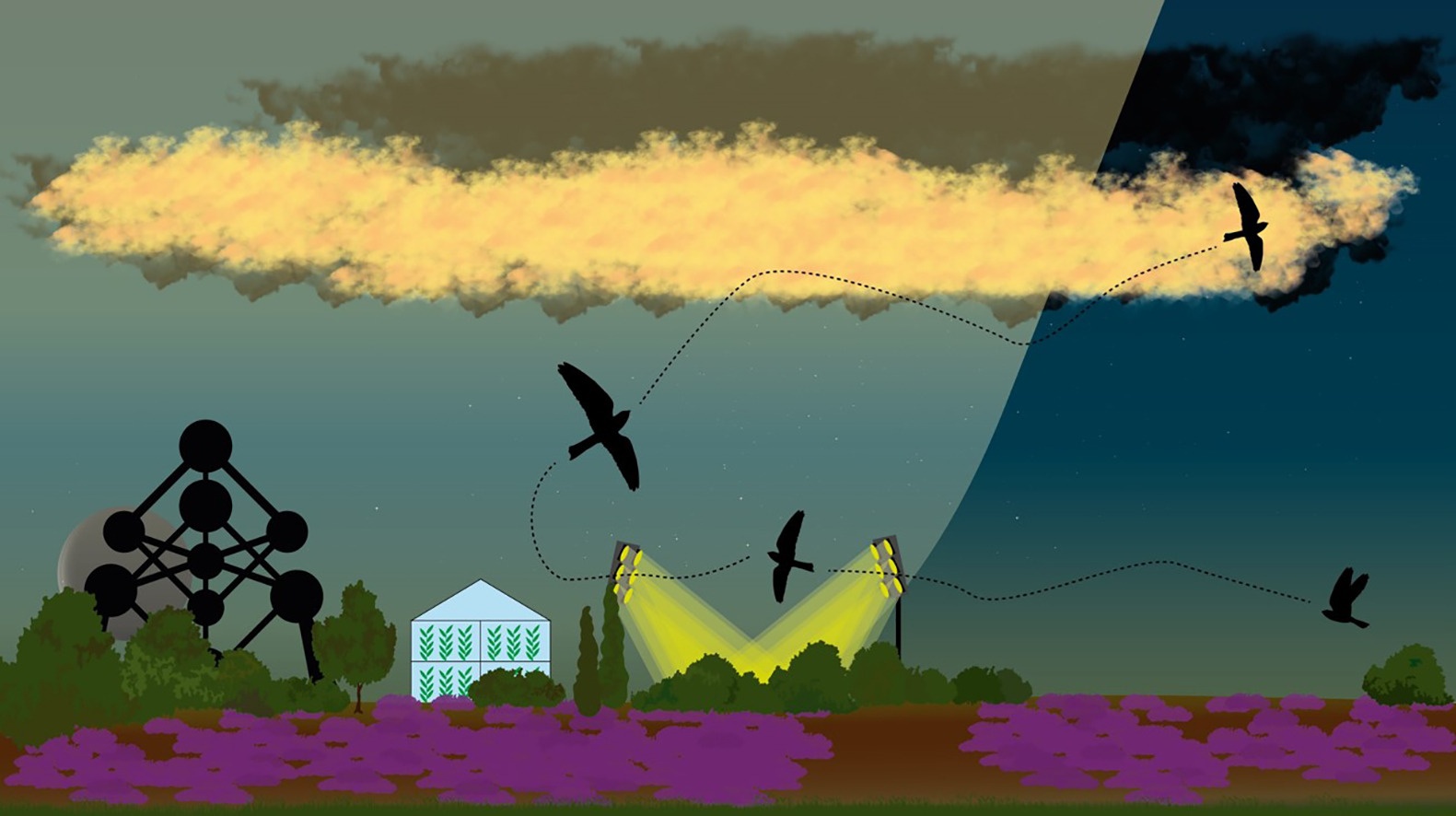In the astronomy community, we typically this of light pollution as an overall negative. Much research points out its negative effect on our sleep and even our observational equipment. It also significantly impacts wildlife; however, according to a new paper from some Belgian, Swiss, and German researchers, not all of that impact is negative.
The paper, released in the journal Science of the Total Environment, discusses light pollution’s impact on birds that are typically most active near twilight. Known as crepuscular species, these include a bird called the European Nightjar. This tiny bird, which looks a bit like an American Sparrow, is commonly found on several continents, including Europe, Asia, and Africa.
That relatively large range makes it ideal for the experiment Dr. Ruben Evens and his colleagues spread over several institutions had in mind for their experiment. They were interested in seeing how the nightjars were affected by “skyglow,” indirect illumination of the night sky caused by artificial lighting. While it might seem akin to light pollution, the authors stress that it is indirect rather than being in the direct line of sight of the light source.
Credit – National Geographic YouTube Channel
To measure how the nightjars were affected, they used one of the most common tools of ornithology – an activity tracker. These can easily be fitted to birds and are small enough that it doesn’t affect their flight patterns, but they tell the researchers where they are going and, most importantly, in this case, when they do so.
They fitted activity trackers to birds in three separate locations: Belgium, sub-tropical Africa, and Mongolia. In Belgium, there is a relatively high occurrence of skyglow, whereas, in Africa and Mongolia, there was hardly any, with “pristine skies,” as the paper describes them. They found that, on moonless nights (i.e., when there is very little natural light), nightjars are four times more active in Belgium than in Africa and twice as active as in Mongolia.
Even those relatively easy-to-understand data points would have been interesting for ornithologists and environmentalists alike. But, the researchers took it a step further by looking at the effect weather conditions had on the nightjars.
Credit – TED YouTube Channel
Clouds dramatically decrease natural brightness, making crepuscular species like the nightjar less active under typical conditions. However, clouds can also increase skyglow by allowing light to bounce off their undersides, thereby increasing the brightness on overcast nights in built-up areas.
In those built-up areas, the researchers found that nightjars dramatically increased their activity on overcast nights, while in the areas less affected by skyglow, their activity level decreased. Simply put, skyglow allowed the birds to operate more effectively under low natural light conditions than they might have otherwise.
Why precisely this might be the case then becomes the question – and the researchers believe it’s a relatively straightforward answer. Increased sky glow allows the nightjars to see better, making it less risky for them to move about. In the technical jargon of scientists, the effect is to “relieve.. [the] visual constraints on being active”, as the paper’s title suggests.
No matter the benefits to a relatively small number of species, most researchers will still think of light pollution, or the skyglow it creates, as an overall harmful effect of the Anthropocene period. However, it’s sometimes refreshing to see how what is typically thought of as a negative can sometimes have a positive impact on wildlife. At least for nightjars and other birds of its ilk, the world has gotten just a little brighter lately.
Learn More:
Evens et al. – Skyglow relieves a crepuscular bird from visual constraints on being active
UT – Light Pollution is Out of Control
UT – Many of the World’s Greatest Observatories Suffer from Some Light Pollution
UT – Light Pollution is Making it Harder for Animals to Find Their Way at Night
Lead Image:
Graphical depiction of the research carried out on Nightjars
Credit – Evens et al.

